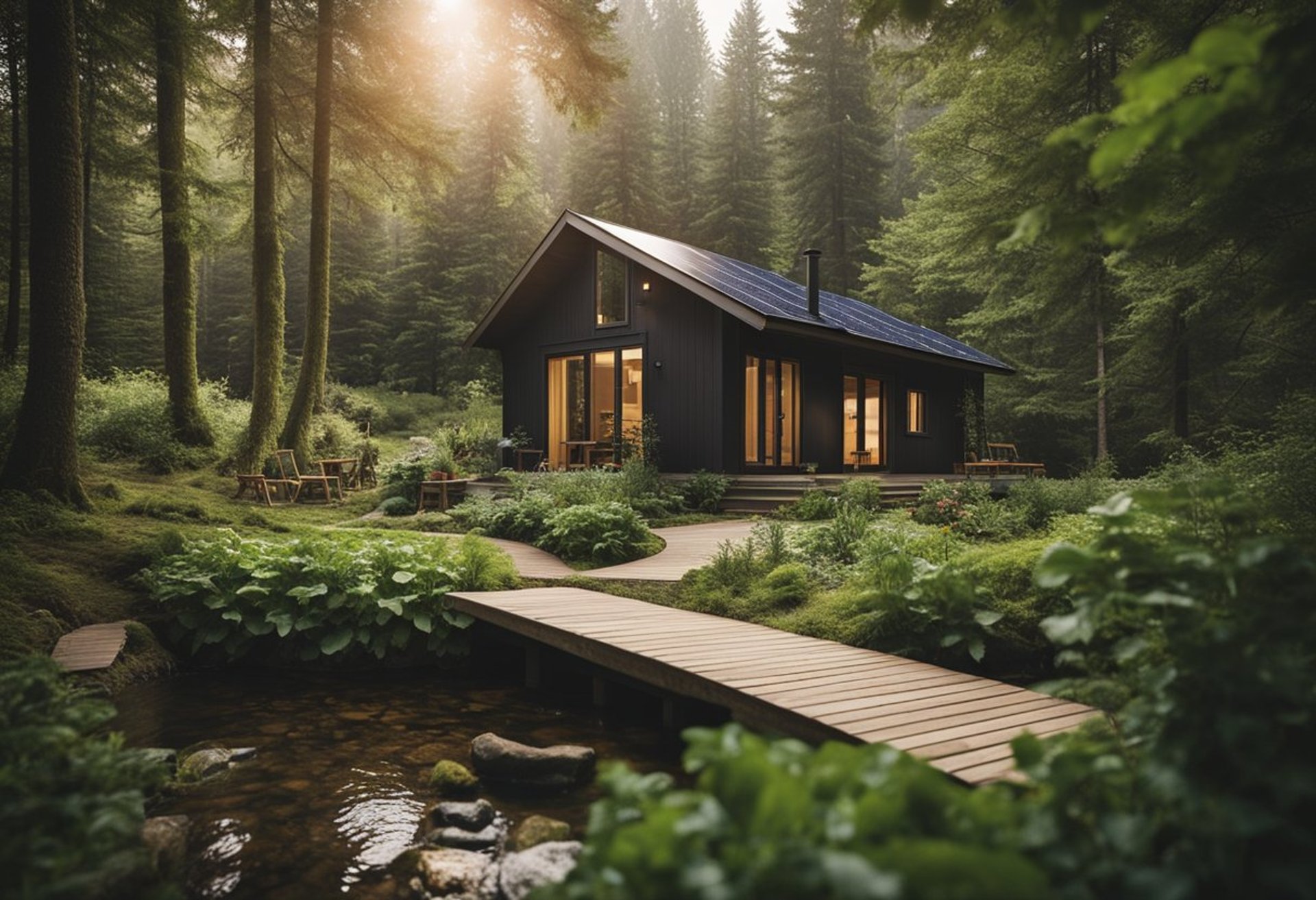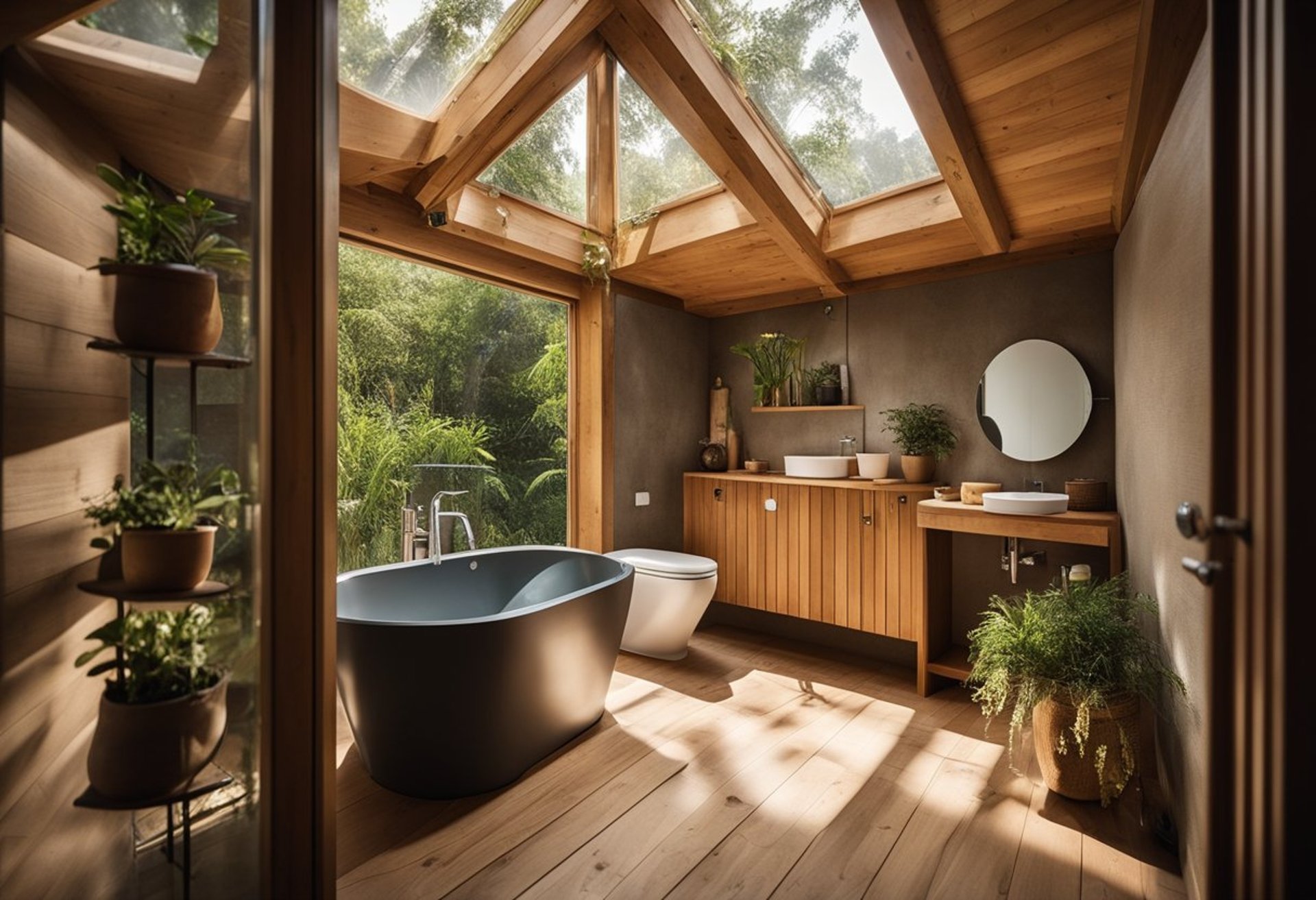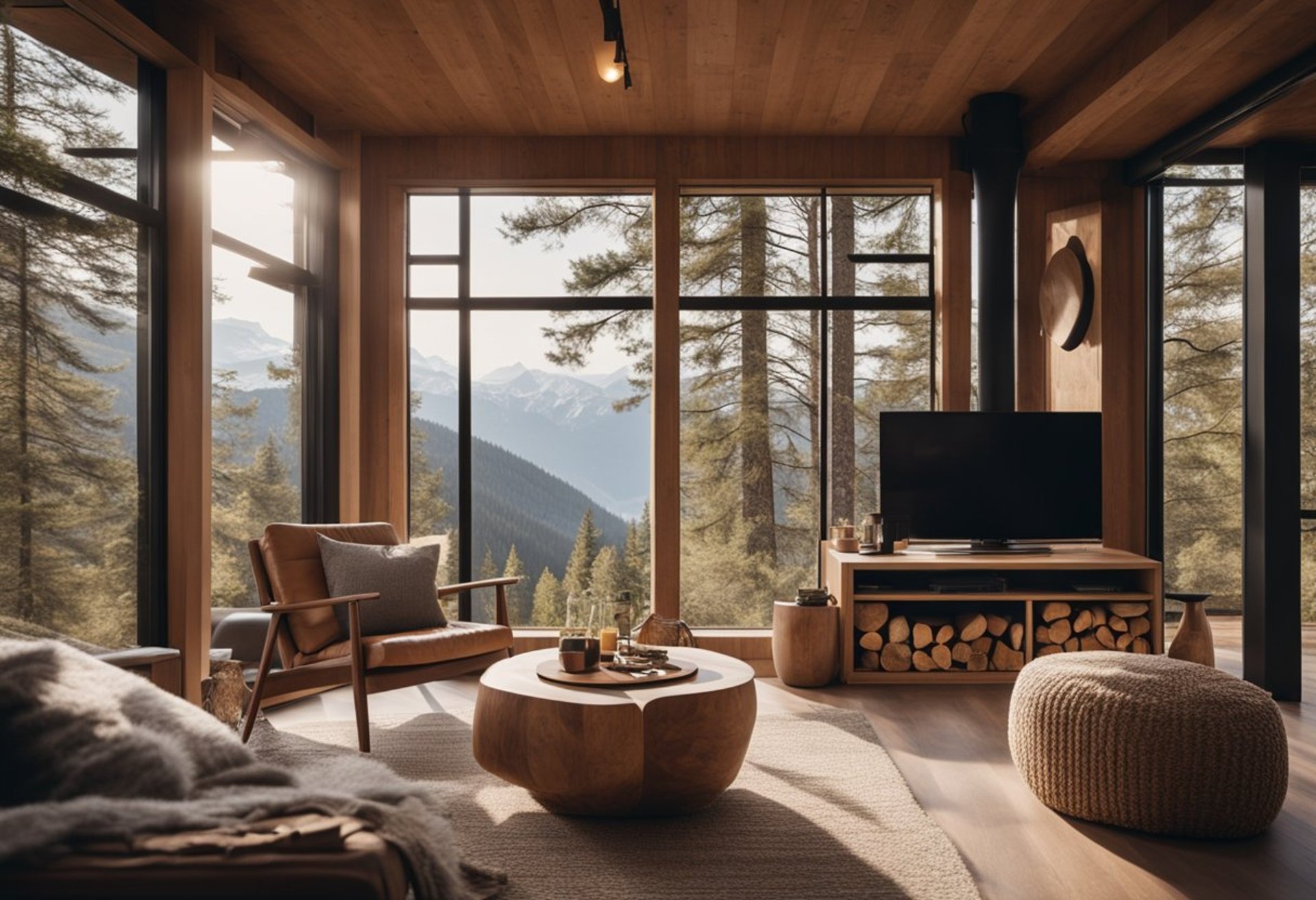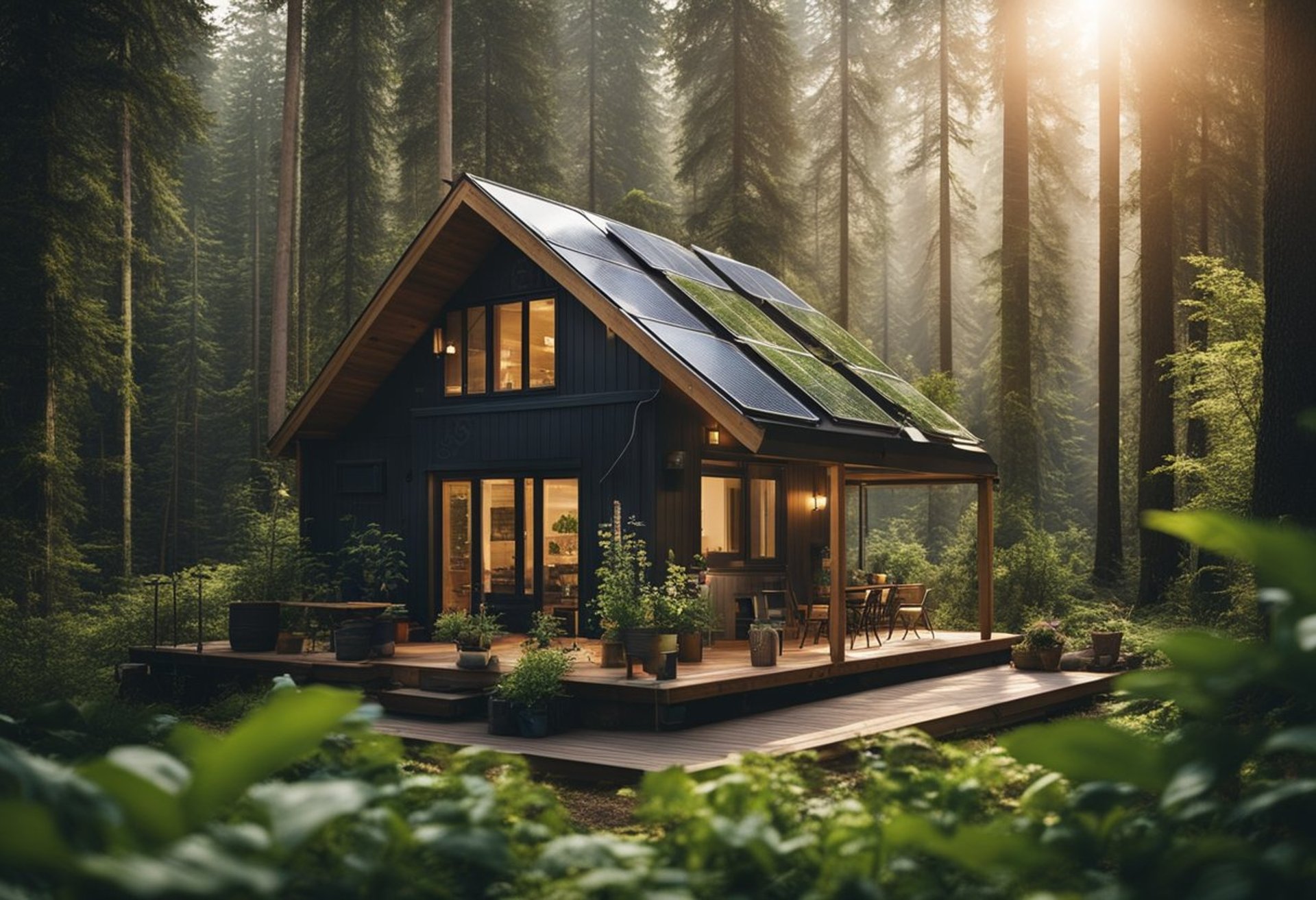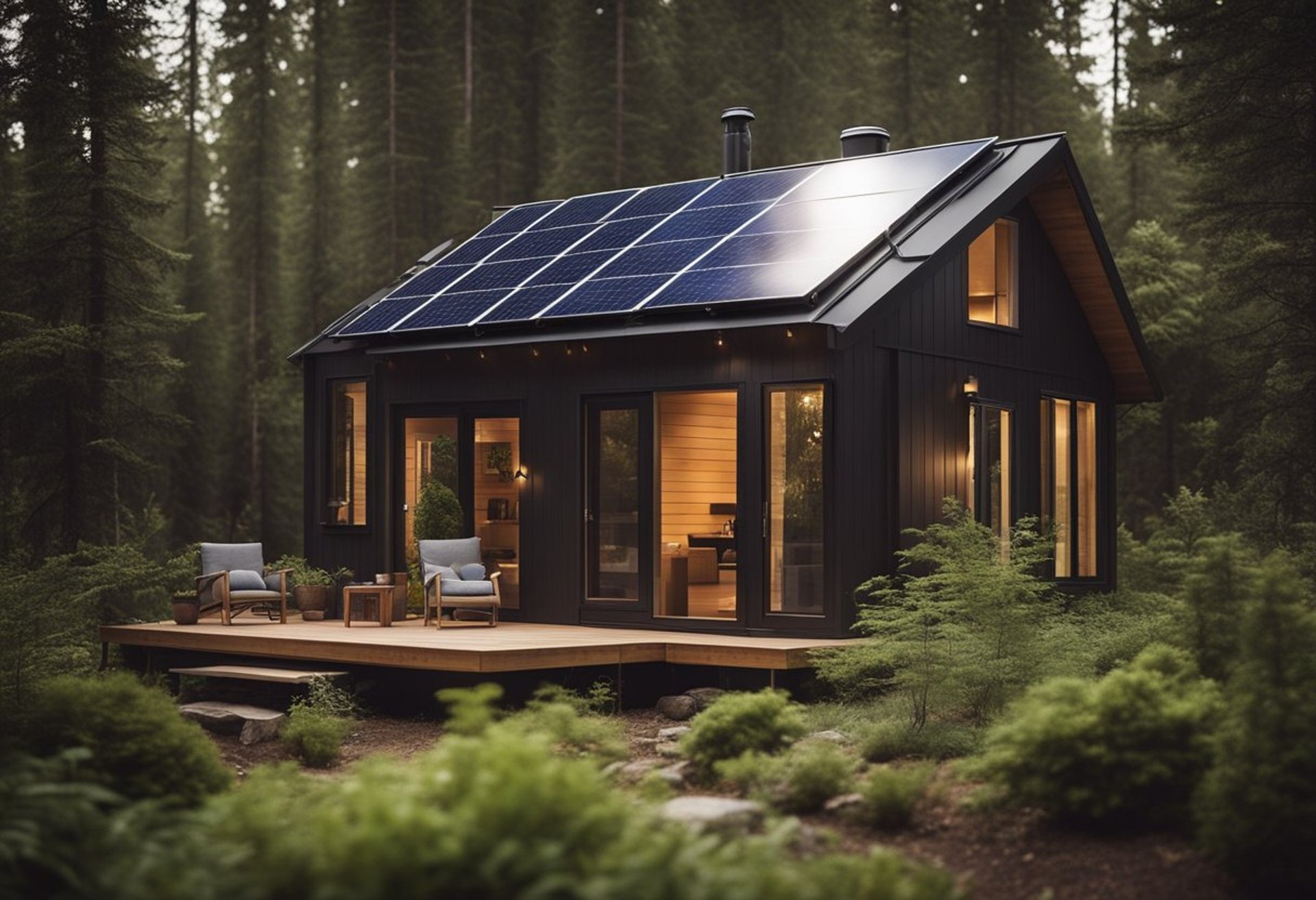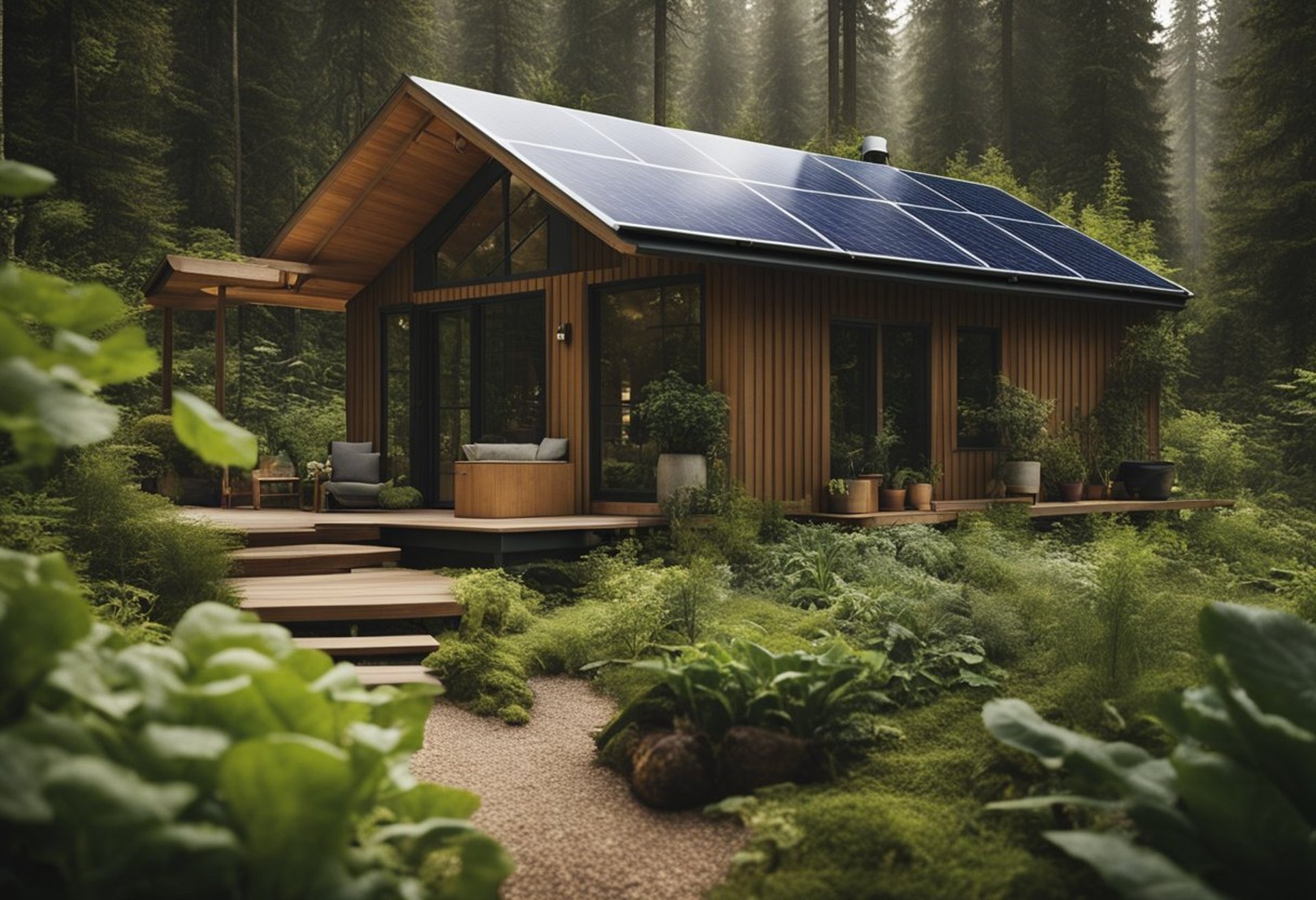Home Design Ideas for Off the Grid Living
Off-the-grid living offers a unique opportunity to reconnect with nature while designing a home that fits sustainable goals. Integrating functional design with eco-friendly practices can create a harmonious living space that thrives in natural settings. From choosing the right materials to optimizing energy sources, there are many elements to consider when embarking on this journey.
Home Design Ideas for Off the Grid Living: Creating Sustainable and Functional Spaces
Off-the-grid living offers a unique opportunity to reconnect with nature while designing a home that fits sustainable goals. Integrating functional design with eco-friendly practices can create a harmonious living space that thrives in natural settings. From choosing the right materials to optimizing energy sources, there are many elements to consider when embarking on this journey.
Incorporating innovative systems and practical layouts will enhance both comfort and efficiency. Thoughtful planning for kitchen spaces, bathroom functionality, and outdoor areas ensures this lifestyle is not only sustainable but also enjoyable. By embracing minimalism and prioritizing essential features, one can truly make their off-grid home a sanctuary.
Key Takeaways
Practical design elements enhance comfort in off-grid living.
Smart kitchen and bathroom layouts support sustainability.
Outdoor spaces play a crucial role in holistic home design.
Planning Your Off-Grid Home
When planning an off-grid home, careful consideration of location, energy efficiency, and sustainable materials is essential. Each aspect plays a crucial role in creating a space that is both functional and environmentally responsible.
Selecting the Right Location
Choosing a suitable location is foundational for an off-grid home. Prospective homeowners should assess land characteristics such as sunlight exposure, wind patterns, and water sources.
For optimal solar energy capture, a south-facing slope is ideal. Proximity to natural resources, like wood for heating and water bodies, enhances sustainability. Local regulations regarding land use must also be considered to avoid legal complications.
Factors like soil quality and potential for natural disasters, such as floods or wildfires, should influence the final decision. Elevation and access to main roads impact not just lifestyle but logistics for maintenance and supplies.
Designing for Energy Efficiency
Energy-efficient design is imperative in off-grid living. Homes should be oriented to maximize passive solar heating, reducing reliance on auxiliary heating systems.
Incorporating large windows with proper shading can facilitate natural light while maintaining comfortable indoor temperatures. Insulation quality is crucial; using high-R-value materials minimizes heat loss in winter and overheating in summer.
Consideration of energy-efficient appliances and LED lighting helps reduce energy consumption. Solar panels can supplement other energy sources, making the home largely self-sufficient. Intentional design choices can lead to sustainable living with minimal environmental impact.
Incorporating Sustainable Materials
The selection of sustainable materials for construction is vital in off-grid home design. Reclaimed wood, bamboo, and recycled metal provide durability while reducing waste.
Local materials minimize transportation emissions, and green building certifications often highlight eco-friendly options. Natural insulation materials, such as sheep's wool or hemp, can enhance energy efficiency.
Finishes should prioritize low-VOC (volatile organic compounds) paints and treatments to improve indoor air quality. Incorporating natural stone or earth-based materials enhances aesthetic appeal while contributing to the ecological integrity of the home.
Essential Systems for Off-Grid Living
For those interested in off-grid living, establishing reliable systems is crucial for sustainability and comfort. Key aspects include harnessing solar energy, ensuring clean water supply, and managing waste effectively.
Solar Power Setup
A solar power setup is fundamental for off-grid cabins. It allows individuals to generate their own electricity, reducing reliance on external sources. The system typically involves solar panels, an inverter, and batteries for storage.
Considerations for setup:
Solar Panel Types: Monocrystalline, polycrystalline, and thin-film options each have unique efficiencies and costs.
Battery Storage: Choosing the right battery type is essential. Lead-acid and lithium-ion are common choices.
Inverter Selection: This converts DC from the solar panels to AC for home use. A pure sine wave inverter is recommended for sensitive electronics.
Investing in quality components ensures a more efficient and dependable energy source.
Water Collection and Purification
Access to clean water is vital for off-grid living. Various methods exist to collect and purify water for daily needs.
Common water collection methods include:
Rainwater Harvesting: Installing gutters and downspouts directs rain into storage tanks. This method is environmentally friendly and efficient.
Dug Wells and Springs: Having a well or access to a natural spring provides a reliable water source.
Purification is essential for safety. Options include:
Filtration Systems: Carbon filters and reverse osmosis systems remove contaminants.
UV Purification: Ultraviolet light systems kill bacteria and viruses effectively.
Establishing a water system ensures a safe and sustainable supply for off-grid living.
Waste Management Solutions
Proper waste management is critical in off-grid scenarios to maintain hygiene and environmental standards. Effective solutions can vary based on location and resources.
Key systems to consider:
Composting Toilets: These systems eliminate the use of water and transform waste into compost, reducing environmental impact.
Greywater Recycling: Systems that filter and reuse wastewater from baths and sinks for irrigation purposes minimize water waste.
Creating an efficient waste management system contributes to a cleaner living environment and promotes sustainability.
Interior Design Elements
In off-grid living, interior design plays a crucial role in creating a functional and comfortable space. Key elements include maximizing natural light, utilizing functional furniture for small spaces, and incorporating thermal mass for heat regulation.
Maximizing Natural Light
Natural light is essential in off-grid homes to reduce reliance on artificial lighting. Large windows and strategically placed skylights can brighten interiors while providing ventilation. Using light-colored walls and reflective surfaces helps distribute sunlight effectively.
Incorporating open floor plans can create a sense of space and encourage light flow. Adding elements like sun tunnels can bring light into darker areas without compromising wall space. Effective window placement can also promote cross-ventilation and temperature control, enhancing comfort without energy consumption.
Functional Furniture for Small Spaces
Space-efficient furniture is vital in off-grid cabins where square footage is limited. Multi-functional pieces, like sofa beds or tables that convert into workspaces, maximize utility. Consider modular furniture that can be rearranged to fit various needs.
Utilizing vertical spaces with shelves and wall-mounted units helps keep floors clear. Opting for built-ins can provide storage and reduce clutter. Selection of materials should prioritize durability, given the often rustic conditions of off-grid living, ensuring long-lasting functionality.
Thermal Mass for Heat Regulation
Thermal mass materials, like concrete or stone, can significantly help in managing indoor temperatures. These materials absorb heat during the day and release it slowly at night, reducing heating needs. Incorporating these materials into walls or flooring can enhance heat retention.
Designing with natural materials can improve insulation while promoting a connection to the surrounding environment. Choosing strategically positioned windows can create passive solar gain, further regulating indoor temperatures without excessive energy consumption. This strategy supports a sustainable approach to off-grid living.
Kitchen Considerations
Designing an off-grid kitchen requires thoughtful planning to optimize efficiency and sustainability. Key aspects include selecting energy-efficient appliances and creating an effective layout with ample storage solutions.
Energy-Efficient Appliances
Choosing the right appliances is crucial for an off-grid kitchen. Energy-efficient models, such as solar-powered refrigerators, are ideal for reducing energy consumption.
Considerations:
Power Source: Assess available energy sources and match appliances accordingly.
Energy Rating: Look at the Energy Star ratings when selecting appliances.
Alternative Cooking Methods: Explore options like propane stoves or wood-fired ovens, which use less electricity.
By integrating these appliances, one can maintain functionality while prioritizing sustainability in off-grid living.
Layout and Workspace Flow
The layout of an off-grid kitchen influences workflow and usability. An open design maximizes space and promotes ease of movement.
Key Elements:
Work Triangle: Position the fridge, sink, and stove to form a triangle for efficiency.
Counter Space: Ensure ample workspace for meal prep. Consider foldable or extendable surfaces to save space.
Zoning: Separate areas for cooking, cleaning, and storage enhances organization.
Thoughtful layout design minimizes steps taken and maximizes productivity, making kitchen tasks more manageable.
Storage Solutions
Efficient storage is essential for a functional off-grid kitchen. Limited space can be optimized through innovative solutions.
Ideas:
Vertical Storage: Use wall-mounted shelves or hanging racks to keep items accessible while saving floor space.
Multi-Functional Furniture: Invest in furniture that serves dual purposes, such as a kitchen island with built-in storage.
Baskets and Containers: Utilize bins for food storage to prevent spoilage and maintain order.
These storage strategies enable better organization and accessibility, crucial for off-grid living where resources may be limited.
Bathroom Design and Functionality
Designing a bathroom for off-grid living requires a focus on sustainability and efficiency. Key components include eco-friendly waste management, water conservation, and natural materials that blend with the environment.
Composting Toilets
Composting toilets are a popular choice for off-grid cabins. They convert human waste into compost through aerobic decomposition. This eliminates the need for a septic system and conserves water.
Advantages of composting toilets:
Minimal water usage
Environmentally friendly
Reduced odor with proper ventilation
Installation can be simple, requiring a small space and minimal plumbing. Users should choose a model that suits their cabin's size and usage frequency. Regular maintenance is essential to ensure effective composting.
Eco-Friendly Showers and Baths
Choosing eco-friendly shower and bath options keeps water usage in check. Tankless water heaters or solar water heaters provide hot water without the need for extensive infrastructure.
Considerations for showers and baths:
Low-flow showerheads reduce water flow without sacrificing performance.
Bathing alternatives, like sponge baths, save even more water.
Natural materials, such as stone or bamboo, enhance the aesthetic while being sustainable.
Setting up a graywater system can also reuse water from sinks and showers, further benefiting off-grid living.
Water-Saving Fixtures
Water-saving fixtures are essential for efficient bathroom design in off-grid settings. These fixtures help reduce overall water consumption, crucial for sustainability.
Key fixtures include:
Dual-flush toilets for flexible water usage.
Aerated faucets that mix air with water, reducing flow without affecting pressure.
The incorporation of these fixtures minimizes the environmental footprint. Regular checks and maintenance ensure they function effectively, maximizing their long-term benefits.
Exterior Design and Landscape
Creating an off-the-grid living space requires careful consideration of exterior design and landscaping. Using durable materials and integrating outdoor living spaces can enhance the functionality and aesthetic of homes. Additionally, incorporating permaculture practices into landscaping promotes sustainability.
Durable Materials for Exterior
When selecting materials for an off-grid cabin exterior, durability and sustainability are key. Wood is a popular choice, especially locally sourced varieties such as cedar or pine. These woods are known for their resistance to decay and insects.
Metal roofs provide a long-lasting option, reflecting heat and reducing energy costs. They withstand severe weather, making them ideal for remote locations.
Consider natural stone for foundations and retaining walls. Stone offers strength, insulation, and blends well with natural surroundings.
Using earth-friendly finishes like natural stains or non-toxic paints can further enhance durability while being kind to the environment. These choices not only protect the structure but also contribute positively to the ecosystem.
Outdoor Living Spaces
Outdoor living areas are essential for enjoying nature while providing functional spaces for cooking, eating, and relaxing. Decks and patios can be constructed using recycled wood or composite materials, offering a sustainable option that requires less maintenance.
Outdoor kitchens equipped with solar-powered appliances promote self-sufficiency. Utilizing weather-resistant furniture made from recycled materials ensures longevity and aligns with off-grid values.
Incorporating shade structures, like awnings or pergolas, can enhance comfort, reducing the need for cooling solutions during hot months. Choose native plants for landscaping to provide natural shade and create a harmonious environment.
Landscaping and Permaculture Practices
Landscaping plays a significant role in sustainability for off-grid living. Adopting permaculture practices designs landscapes that mimic natural ecosystems, optimizing resource use. This can include strategically placing fruit trees, vegetable gardens, and native flora.
Swales and rain gardens manage stormwater, preventing erosion and promoting groundwater infiltration. These features ensure water is utilized effectively, reducing reliance on external sources.
Incorporate composting systems within landscapes to enrich soil. This approach minimizes waste and encourages healthy plant growth while maintaining the off-grid ethos.
Utilizing local flora not only supports biodiversity but often requires less maintenance, aligning with off-grid living goals. Thoughtful placement of plants ensures optimum sunlight and enhances the beauty of the environment.









